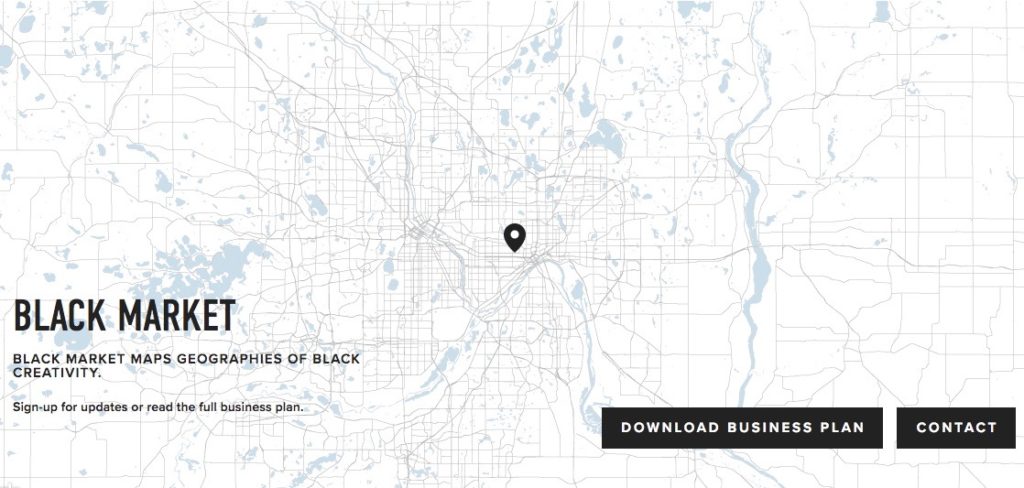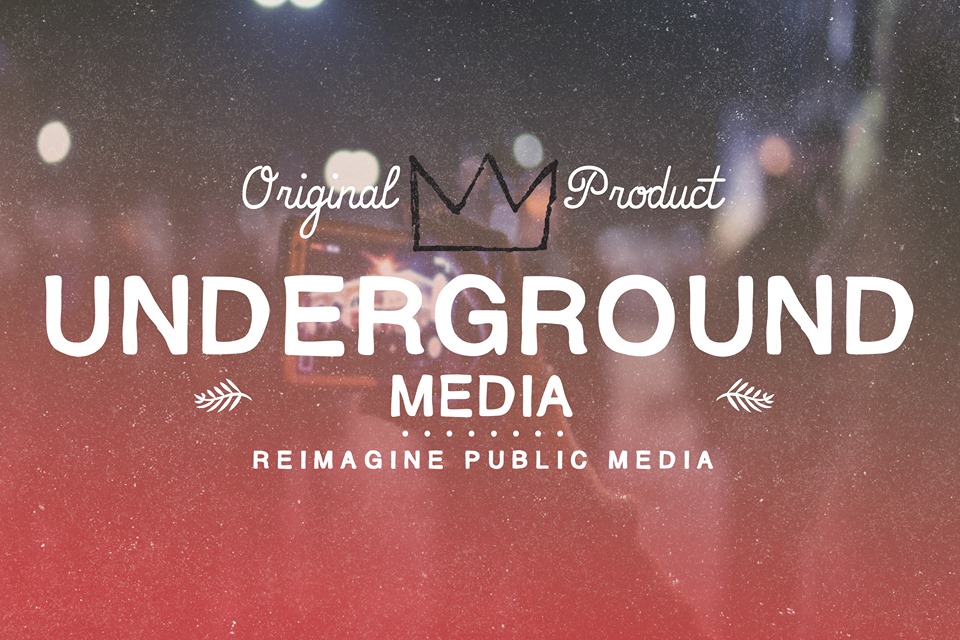Tana Hargest’s wide-ranging work addresses issues of surveillance, policing, and public policy
As a long-time arts organization leader and cultural producer based in the Twin Cities, Tana Hargest says now that she is “mid-career” she has made a shift to focus on three different, yet complementary, means of creative output.
She creates large-scale installation works examining issues of race, class, and power. She also works with collectives and organizations that take direct action on these issues while also building collaborative projects such as the Underground Media Collective, which works to reimagine public media. And, finally, she works as a consultant with arts and cultural organizations, nonprofits, startups, and other entities to try to change the arts ecosystem by addressing issues of equity in their work through strategic ideation and capacity building.
For the past year Hargest has been a Creative Economy Fellow with Springboard for the Arts, and during that time she has continued working on several different projects currently in the planning stages that are now all “picking up steam and gaining traction.”
Through the Springboard fellowship and, more recently, a St. Paul Knight Arts Challenge Grant, Hargest has been working on Black Market, a think tank of Black cultural producers that looks at public policy through an arts and culture lens. The seven cultural producers selected to serve as think tank fellows will identify and propose solutions to social, economic, and racial challenges in St. Paul and share their work through community conversations, podcasts, artist residencies, and more. At the heart of Black Market are the questions of who is called to the table as an “expert” in conversations about public policy and who is being left out, and what outcomes does the think tank expect to see out of social justice conversations.
Hargest plans on running Black Market as an unincorporated project for the immediate future, but plans on ultimately incorporating it as a cooperative association – one of four cooperatives she hopes to launch over the next several years in order to create an interplay of co-ops.

Black Market would function as a workers’ cooperative, with owner-members who draw on their artists’ skills in design thinking and creative problem solving and use those skills to work with organizations as consultants, while other artists can work with these owner-members to develop those same skill sets. On the other side there will be subscribers, anything from small organizations to for-profit businesses that can purchase different levels of memberships through which they can utilize services such as consulting or strategic planning in blocks of time. The amount of time they have available to book would depend on their membership level, ultimately outsourcing this work to the skilled artists in the co-op.
“This is all part of my capacity-building work,” says Hargest. “Artists are micro business owners already. They have to do their own marketing and sales for their careers, so we can recast some of the skills to use them for working with organizations. A lot of times small organizations can’t have an in-house communications staff and have to make do, so there is a lot of tasking of in-house staff to do four jobs instead of one. This allows organizations to share high-skilled staff and bank hours depending on their level of membership.”
Next in Hargest’s development plans is an investment fund to support some that kind of work in an effort to get away from the challenges presented by the “nonprofit industrial complex,” in which nonprofits are run on “extracted wealth” – dependent upon grants and donations. In order to support nonprofits, she would like to create an immersive installation environment similar to Santa Fe’s Meow Wolf that will be entirely about art entertainment in order to generate support for the cooperative and projects that will be part of her envisioned network.
Another project currently on Hargest’s plate, and one that has made her a finalist for the Forecast Public Art’s 2018 Mid-Career Project Grant, is a large-scale, performance-based installation called Survival System. This project examines surveillance policing, community-held accountability, and community responses to emotional crises.
Survival System will mimic a 1960s Gemini-era mission control room, that Hargest will knit/crochet/embroider into existence, installed inside a semi trailer that will serve as a mobile control room for sensing “disturbances” in the city. Mediators and seers will monitor activity in the city from the control room, and when a disturbance is observed artist-responders will be dispatched to interview people in the affected area and determine what kind of intervention will help to alleviate the stress and return balance to the area.
The responding artists will then take folks through art interventions to restore balance to their lives. There will also be an app people can download to get a ping when there is a disturbance and they can then either meet responders there or meditate to help remotely restore balance to that area. In the evening, responders will invite people to join them at mission control to talk about police abolition and restorative justice.
“Survival System is meant to be a lab for working out some of these more radical ideas around the abolition of policing and community-held accountability,” says Hargest. “We’re starting a conversation about what conditions we need to have right now in order to get there in five generations.”
Hargest hopes to have Survival System operational in the Twin Cities by the summer of 2018, though, she says, the scope of it is like an independent film production with a number of different “moving parts” involved – requiring everything from metal fabricators to trained artist responders and “seers,” and a sizable budget to pull it all together. After it launches in the Twin Cities, she would then like to spend the next three years taking it to other cities throughout the United States to do a few activations with a new cast of responders and seers in each city to ensure that interventions are appropriate to that city and reflective of the local community, not just “dropped in.”

Another project Hargest is working on that will complement Survival System while also serving as a stand-alone project is an “emotional weather map” that will be part of an upcoming Made Here exhibit opening December 19.
This “weather map” pulls data from social media, monitoring a selection of thousands of keywords developed by a marketing data researcher in Minneapolis indicating a variety of different emotional states, then running them through a predictive model that will then allow her to create a map showing where there are concentrations of emotions like angst or anger, or flashes of joy, or occurrences of curiosity. There will be an accompanying app that enables an emotional map prediction so people can plan their day based on the city’s forecast. Seers will also use this data for Survival State.
The first phase of the emotional weather maps will be fairly “bare bones,” Hargest explains, with a limited data set and forecasting tool. Phase two will expand its capabilities and reach, allowing “storm chasers” to upload data from their Fitbits and other devices.
While her initial intended use for the emotional weather maps is arts-based, Hargest is already thinking about what uses they might have beyond art – for example, if researchers or public policy makers might be able to make use of them, including those with Black Market. And thus, all of her ongoing and in-development projects connect. Her goal is to ultimately have all of her work – her artistic and spiritual practices, her work as a social justice advocate and social experimenter – fall under one great big umbrella, each effort feeding and informing the other with her primarily in a leadership role with those with whom she collaborates.
“The intersection of my artistic practice, meditation, and leadership is what I’ve been trying to align most of my waking time towards recently,” Hargest says. “All of the projects are collaborative, and some of my work is trying to figure out how to gently hold my role as the person who was the spark of the idea and how I maintain a radically collaborative practice as I pull people in. A lot of the last year I’ve spent thinking about aligning all of my work towards the goal of liberation, thinking about developing my skill set as a Black artist leader in a way that draws on the history of Black leadership.”

(1) How do you like to collaborate?
When it works for me is when it feels an awful lot like when I was a high school art teacher, where I am relying on my experience and skill set to help other folks in the room get to ides they wouldn’t have got to individually, including myself.
(2) How do you a start a project?
They’re all a little bit different. Sometimes I start with language, which can just be a word or phrase. I think an awful lot in systems and a lot of times it can seem like a challenge of stopping points, so identifying whatever seems stickiest with the most acceleration points and starting with that.
(3) How do you talk about your value?
I have to do it a lot when making a case for grants or selling services as consultant. I think I am a pretty generative and quick thinker and idea generator. The part I like the most about collaboration is when I can help the room get to a new point or new idea that maybe wouldn’t be possible if I weren’t in the room.
(4) How do you define success?
If my personal goals are aligning with goals that are broader than myself, if I feel like I’m reaching that goal in a synthesis between personal liberation and moving us forward on obtaining liberation for all, then that’s part of it. It again goes back to the reasons I like to collaborate: the biggest success is if everybody recognizes we created something new.
(5) How do you fund your work?
Many ways. I have learned over the years to not be reliant on one source of revenue, which is part of what has evolved to this real interest in wanting to explore cooperative economics. I have multiple sources of funding, so if market forces beyond my control impact one I can go to another. Grants are part of it. I’m doing more cultivation of investors, whether from the nonprofit sector or social venture capital. There are individual donors, and then I’m doing a lot of selling the services of problem solver to organizations.
